 |
 |
 |
| |
Depression or Anxiety Linked to Type 1 or 2 MI in US People With HIV
|
| |
| |
30th CROI, Conference on Retroviruses and Opportunistic Infections, February 19-22, 2023, Seattle
Mark Mascolini
A depression diagnosis predicted type 1 myocardial infarction (MI) and had "a clinically relevant effect" on type 2 MI in a study of 33,071 people with HIV in the United States [1]. The analysis also linked anxiety to type 2 MI.
MI remains a substantial threat to people with HIV for several reasons, including ongoing inflammation, lifestyle traits, and drug side effects. Researchers working with 7 NA-ACCORD clinical cohorts with data from 1997-2017 conducted this study to determine the impact of diagnosed depression or anxiety on an adjudicated first MI. Primary outcomes were first type 1 MI (plaque rupture or cardiac intervention) or type 2 MI (demand ischemia, in which oxygen requirements of the heart are not met because of some interfering need [2]).
Researchers set the baseline date as the day a person entered observation for an MI. The predictor was a composite diagnosis of depression or anxiety (an ICD-coded diagnosis before newly diagnosed MI). To estimate the association between depression or anxiety and MI, the investigators used Cox proportional hazards models adjusted for sex at birth, age, race or ethnicity, HIV acquisition risk, substance use, and traditional and HIV-related cardiovascular risk factors.
Among 33,071 cohort members followed for 168,846 person-years, 50.6% never had depression or anxiety diagnosed, 49.4% had either depression or anxiety diagnosed, and 33.2% had both depression and anxiety diagnosed. Of the 869 MIs diagnosed, 495 (57%) were type 1 and 374 (43%) were type 2.
Comparing 16,351 people ever diagnosed with anxiety or depression with 16,720 never diagnosed, the NA-ACCORD team found similar proportions male at birth (81% and 84%), median age (42 and 41), and history of a detectable viral load (82% and 78%). Respective proportions of whites were 52% and 40%, blacks 29% and 40%, Hispanics 13% and 13%, tobacco use ever 74% and 64%, cocaine use ever 14% and 9%, hypertension 32% and 26%, and high total cholesterol or statin use 35% and 28%.
The adjusted proportional hazards model determined that a depression diagnosis independently boosted type 1 MI risk by almost one quarter (adjusted hazard ratio [aHR] 1.23, 95% confidence interval [CI] 1.02 to 1.49) but an anxiety diagnosis did not. In contrast, an anxiety diagnosis independently raised chances of type 2 MI about 40% (aHR 1.42, 95% CI 1.10 to 1.83). Although a depression diagnosis did not independently predict type 2 MI, the researchers judged the association "clinically relevant" (aHR 1.20, 95% CI 0.96 to 1.51).
Other factors independently linked to type 1 MI were being male at birth (aHR 1.55), every added 10 years of age (aHR 1.50), ever using tobacco (aHR 1.88), four traditional cardiovascular risk factors (hypertension, diabetes, high cholesterol or statin use, chronic kidney disease), and one HIV risk factor (ever using a protease inhibitor, aHR 1.49).
Ever having a detectable HIV load inflated type 2 MI risk by one third (aHR 1.35, 95% CI 1.02 to 1.79). Other factors independently tied to type 2 MI were every added 10 years of age (aHR 1.18), ever using tobacco (aHR 1.36), ever using cocaine (aHR 1.49), and three traditional risk factors (hypertension, diabetes, chronic kidney disease).
The NA-ACCORD team suggested the link between anxiety and type 2 MI could be influenced by substance use (cocaine in this analysis). They proposed "it is critical to understand the role of mental health diagnosis and treatment in affecting cardiovascular health among people with HIV, including access to substance use disorder treatment and comorbidity management."
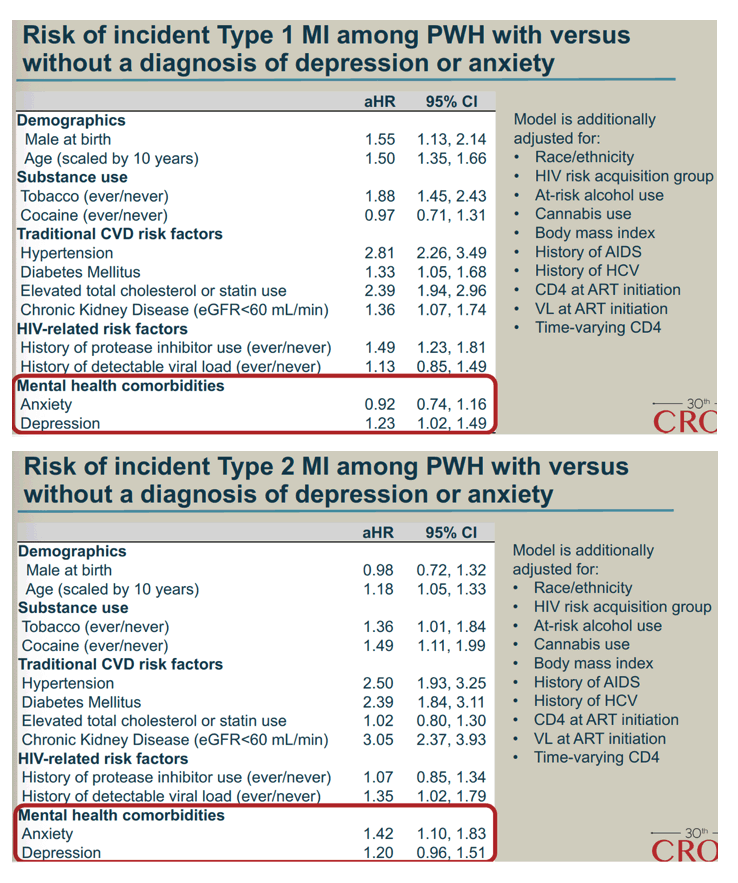
References
1. Hyle EP, Humes E, Mukerji S, et al. Depression and anxiety associated with incident type I and II MI among PWH. 30th CROI, Conference on Retroviruses and Opportunistic Infections, February 19-22, 2023, Seattle. Abstract 145.
2. acdis. Q&A: ICD-10-CM reporting for demand ischemia. March 6, 2019. CDI Blog - Volume 12, Issue 34. https://acdis.org/articles/qa-icd-10-cm-reporting-demand-ischemia
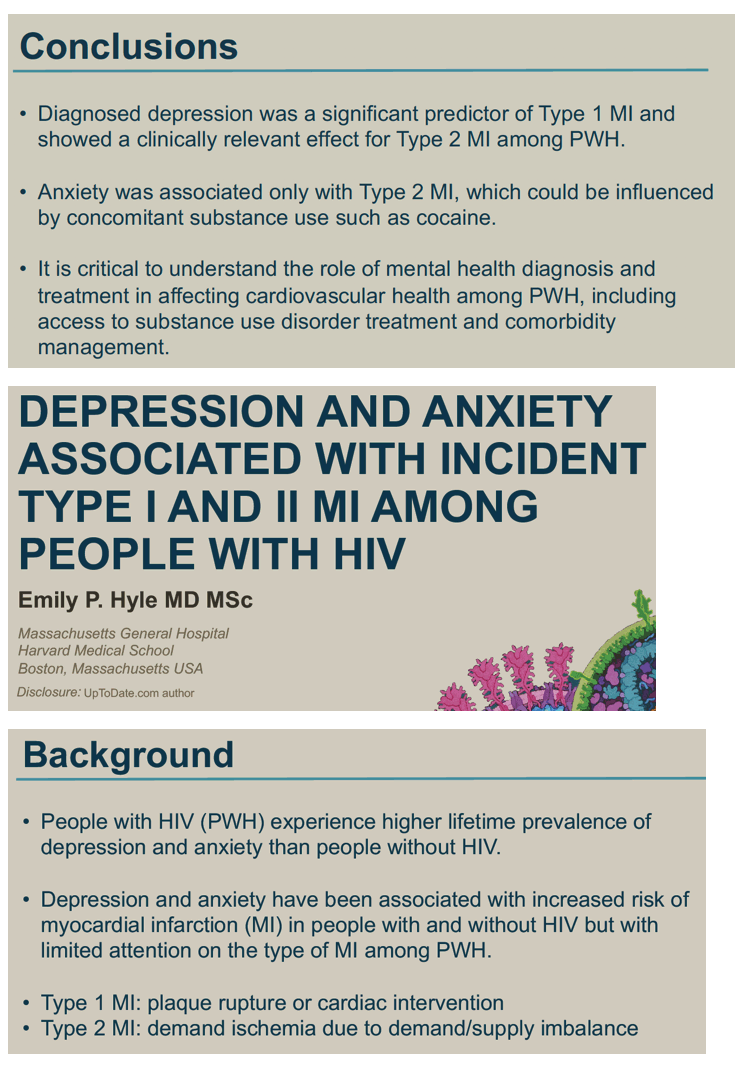
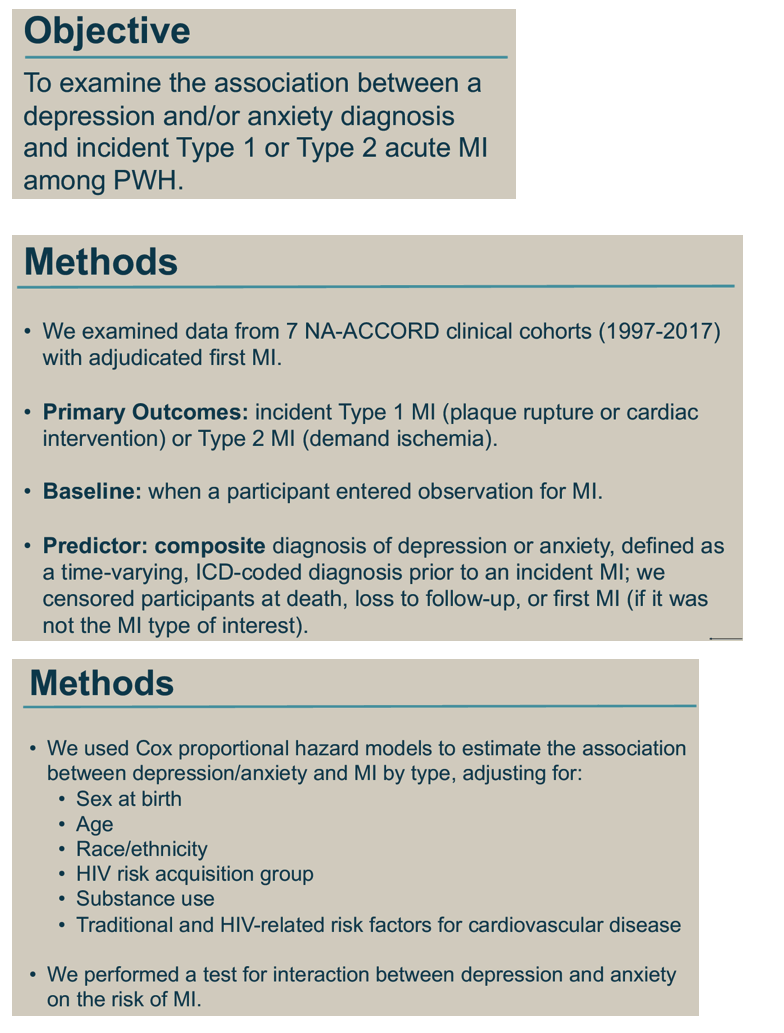
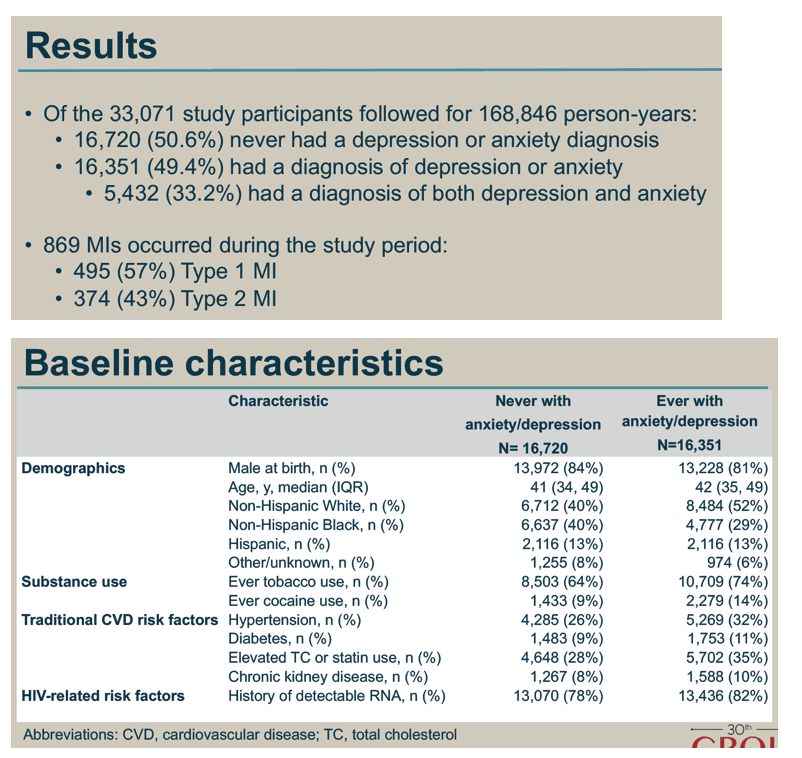
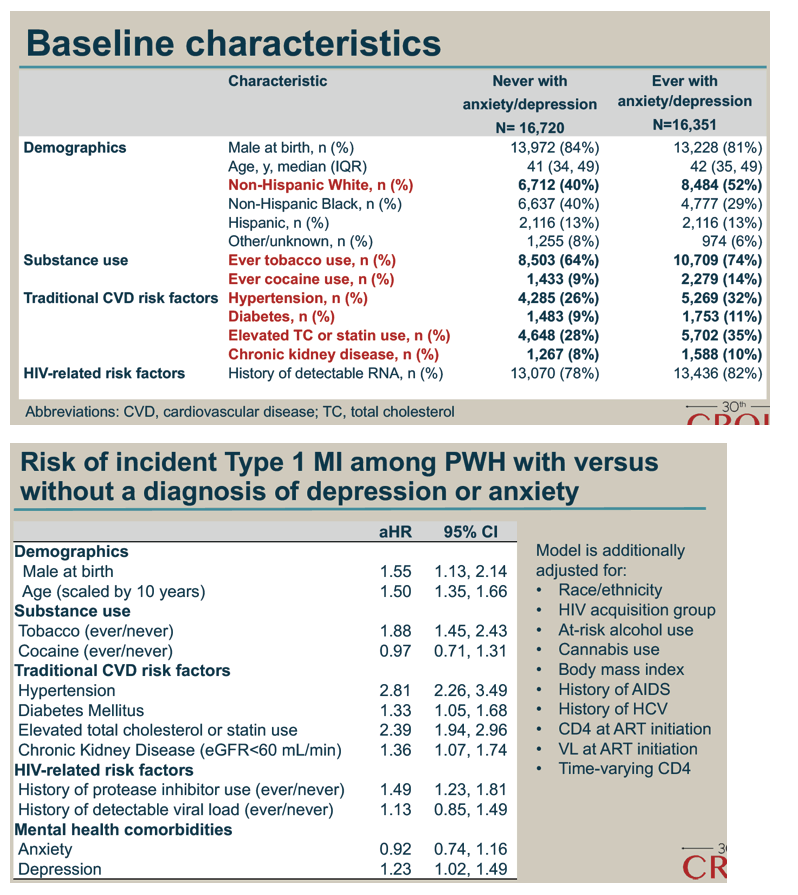
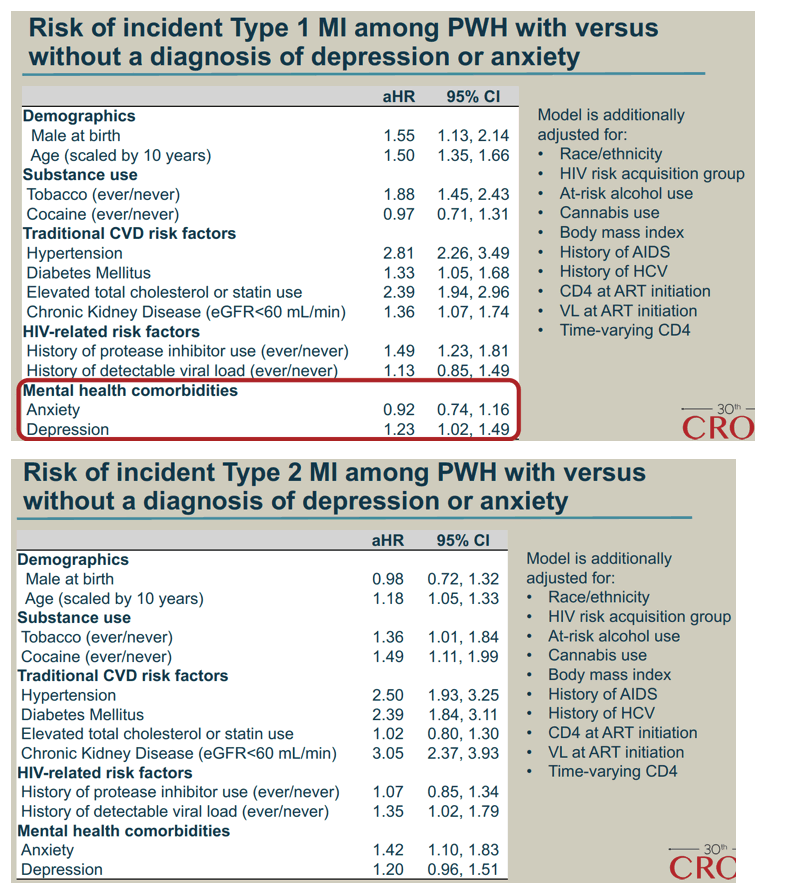
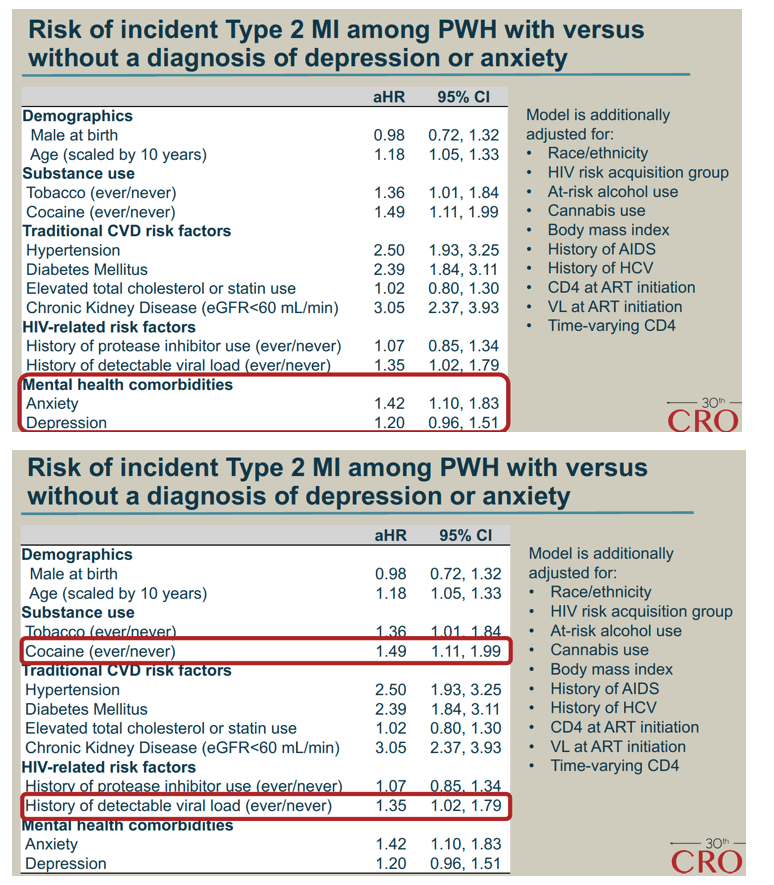
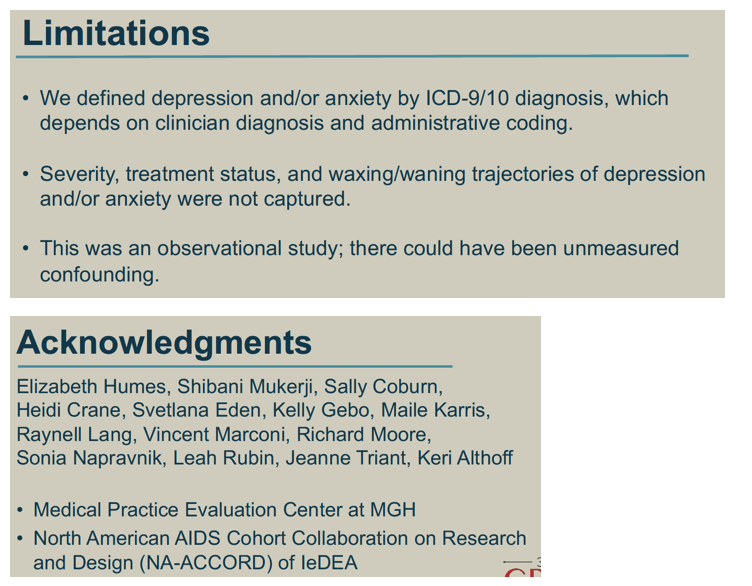
|
| |
|
 |
 |
|
|